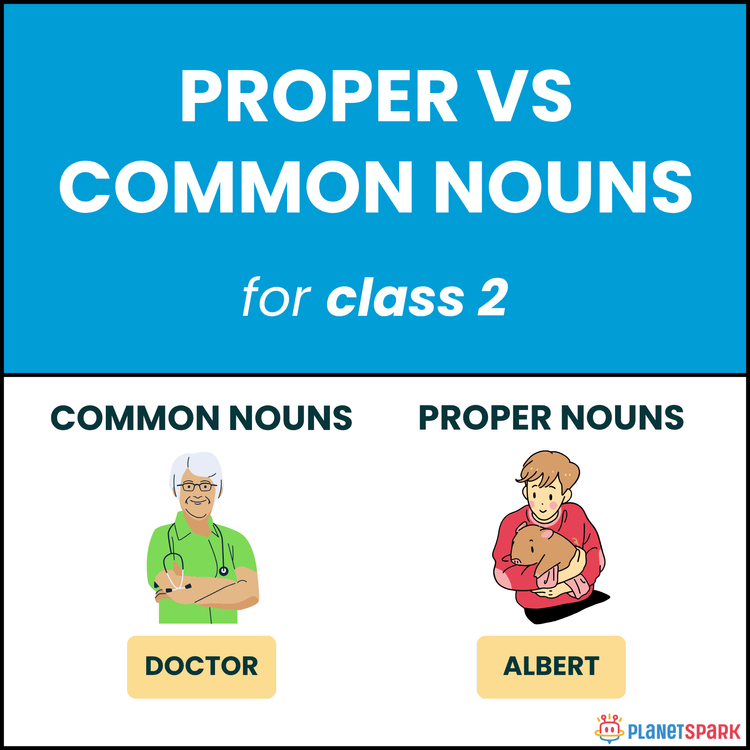Direct and Indirect Speech Rules with Examples

Direct and indirect speech are two ways of reporting what someone says. In direct speech, we quote the speaker’s exact words within quotation marks, like She said, “I am happy.” In indirect speech, we report the meaning without quoting directly: She said that she was happy. These changes affect pronouns, verb tenses, and time expressions. Understanding direct and indirect speech is essential for grammar, exams, and everyday communication. In this guide, we’ll explain the rules with clear examples and exercises to help you master both easily.
What is Direct Speech?
Direct speech is when we repeat the exact words spoken by a person without making any changes. The words are usually placed inside quotation marks to show that they are the original words of the speaker. For example: Riya said, “I love reading books.” In this case, the quotation marks show the exact sentence that Riya spoke.
Direct speech is often used in stories, conversations, and dialogues to bring life and clarity to the text. It helps the reader or listener feel more connected to the speaker’s emotions and tone. Writers use it to make conversations realistic, and students often see it in grammar exercises to understand how words are directly quoted.
What is Indirect Speech?
Indirect speech, also known as reported speech, is used when we do not quote a speaker’s exact words but instead convey the message in our own words. For example, if the direct speech is Riya said, “I love reading books”, the indirect version becomes Riya said that she loved reading books.
In indirect speech, quotation marks are not used, and certain changes are made to pronouns, verb tenses, and time expressions to fit the context. This form is widely used in news reports, storytelling, and daily communication because it focuses on the meaning of the words rather than repeating them word for word.

Key Differences Between Direct and Indirect Speech
Direct and indirect speech are closely related but they are not the same. Direct speech repeats the speaker’s words exactly as they were spoken, while indirect speech changes the structure to report what was said. These differences affect the punctuation, the use of quotation marks, pronouns, verb tenses, and even time expressions.
Here is a quick comparison to make it easier to understand:
| Feature | Direct Speech Example | Indirect Speech Example |
|---|---|---|
| Quotation Marks | She said, “I am tired.” | She said that she was tired. |
| Pronouns | He said, “I will call you.” | He said that he would call me. |
| Verb Tense | She said, “I love this song.” | She said that she loved that song. |
| Time Expressions | He said, “I am leaving tomorrow.” | He said that he was leaving the next day. |
| Focus | Exact words of the speaker | The meaning of the words |
This comparison shows that while direct speech keeps the speaker’s exact words, indirect speech adapts them to fit the sentence grammatically and logically.
Want your child to master English grammar with ease? Book a demo of PlanetSpark’s engaging live classes today.
General Rules of Changing Direct Speech to Indirect Speech
When converting direct speech into indirect speech, certain grammar rules must be followed. These rules help adjust the sentence so that the meaning remains the same, even though the wording changes.
1. Change of Pronouns
Pronouns in direct speech often need to be adjusted to match the point of view in indirect speech.
Example: She said, “I am ready.” → She said that she was ready.
2. Change of Verb Tenses
If the reporting verb is in the past tense, the tense of the verb inside the quotation usually shifts back one step.
Example: He said, “I am working.” → He said that he was working.
3. Change of Time Expressions
Words related to time also change when moving from direct to indirect speech.
Example: She said, “I will come tomorrow.” → She said that she would come the next day.
4. Change of Place Expressions
Place words sometimes change to fit the new context.
Example: He said, “I am staying here.” → He said that he was staying there.
By following these rules, you can easily transform any direct speech sentence into indirect speech while keeping the original meaning intact.
Rules for Different Types of Sentences
Changing direct speech to indirect speech depends on the kind of sentence being reported. Each type follows its own set of rules.
a) Statements (Declarative Sentences)
When reporting a statement, the word that is usually added, though it can sometimes be omitted. The tense of the verb often shifts back if the reporting verb is in the past.
Example:
Direct – She said, “I am learning English.”
Indirect – She said that she was learning English.
b) Questions (Interrogative Sentences)
In reported questions, the question mark is removed. If the question starts with a question word (what, where, when), the same word is used. If it is a yes/no question, the words if or whether are used.
Example:
Direct – He asked, “Where are you going?”
Indirect – He asked where I was going.
Direct – She asked, “Do you like pizza?”
Indirect – She asked if I liked pizza.
c) Commands and Requests (Imperative Sentences)
Commands and requests are reported using verbs like told, asked, requested, ordered followed by to + verb.
Example:
Direct – She said, “Please close the door.”
Indirect – She requested me to close the door.
Direct – The teacher said, “Finish your homework.”
Indirect – The teacher told us to finish our homework.
d) Exclamations (Exclamatory Sentences)
Exclamatory sentences express strong emotions. In indirect speech, words like exclaimed, wished, prayed, said with joy, said with sorrow are often used. The exclamation mark is removed.
Example:
Direct – She said, “Wow! What a beautiful view!”
Indirect – She exclaimed with joy that it was a beautiful view.
Direct – He said, “Alas! I failed the test.”
Indirect – He exclaimed with sorrow that he had failed the test.

Common Mistakes to Avoid
Many learners understand the rules of direct and indirect speech but still make small mistakes while applying them. One of the most common errors is forgetting to change the tense when the reporting verb is in the past. For example, He said, “I am busy” should become He said that he was busy, not He said that he is busy.
Another mistake is keeping the same time and place words from direct speech. Words like today, tomorrow, yesterday, here, now must be changed to that day, the next day, the previous day, there, then in indirect speech.
Students also tend to forget the right reporting verb for questions, commands, or exclamations. Choosing words like asked, told, ordered, exclaimed makes the sentence more natural and grammatically correct.
Avoiding these small errors will make your reported sentences smooth, accurate, and easy to understand.
Practice Exercises with Answers
Practicing direct and indirect speech is the best way to understand the rules. Try converting the following sentences from direct to indirect speech before checking the answers.
Exercises:-
She said, “I am going to the market.”
He said, “I will call you tomorrow.”
They said, “We are watching a movie.”
The teacher said, “Do your homework.”
He asked, “Where is my book?”
She said, “Wow! That was amazing.”
Answers:-
She said that she was going to the market.
He said that he would call me the next day.
They said that they were watching a movie.
The teacher told us to do our homework.
He asked where his book was.
She exclaimed with joy that it had been amazing.
By practicing sentences like these regularly, you can quickly become confident in converting direct speech to indirect speech without confusion.
How PlanetSpark Helps Kids Master Direct and Indirect Speech
Direct and indirect speech can be tricky, but PlanetSpark makes learning it simple and engaging. Through live classes, activities, and storytelling, kids practice grammar in real-life contexts instead of just memorizing rules. With expert guidance, they gain confidence in using direct and indirect speech naturally while improving overall communication skills.
Why Choose PlanetSpark?
Interactive Learning – Fun activities and storytelling simplify grammar concepts.
Real-Life Practice – Helps kids apply direct and indirect speech in daily communication.
Expert Guidance – Personalized support from experienced mentors.
Boosts Confidence – Strengthens writing, speaking, and storytelling skills.
Holistic Growth – Builds accuracy, fluency, and creativity together.
Learning grammar can be fun. Book a free demo class at PlanetSpark and see the difference in your child’s communication.
Conclusion
Direct and indirect speech may look tricky at first, but once you understand the rules, they become much easier to use. Direct speech shows the speaker’s exact words, while indirect speech reports the meaning in a changed form. With the right use of pronouns, verb tenses, and time expressions, you can convert any sentence correctly.
The key is consistent practice. The more you work with examples and exercises, the more natural the transformation will feel. Whether you are preparing for exams, writing stories, or improving your English communication, mastering direct and indirect speech will make your language more accurate and expressive.
Frequently Asked Questions
Direct speech uses the speaker’s exact words inside quotation marks, while indirect speech reports the meaning without quotation marks. Rules include changes in pronouns, verb tense, and time expressions.
To change direct speech into indirect speech, adjust the pronouns, shift the verb tense back (if needed), and replace time or place words like tomorrow with the next day.
The easiest way is to first understand the basic rules, then practice converting simple sentences daily. Using worksheets and exercises helps build confidence.
Students often forget to shift tenses, use the wrong pronouns, or keep words like today and here unchanged. Correct usage requires adapting the sentence to the reporting verb.
They are important because they make communication clearer. Direct speech shows exact words, while indirect speech helps in reporting conversations, storytelling, and academic writing.
Yes. Direct: She said, “I am learning English.” Indirect: She said that she was learning English. Direct: He said, “I will call you.” Indirect: He said that he would call me.
Download Free Worksheets
Personalized Communication Report
Record a video to get a AI generated personalized communication report for your child

Hi There, want to try these
tips for your child with
LIVE with our expert coach?
Let's check your child's
English fluency

